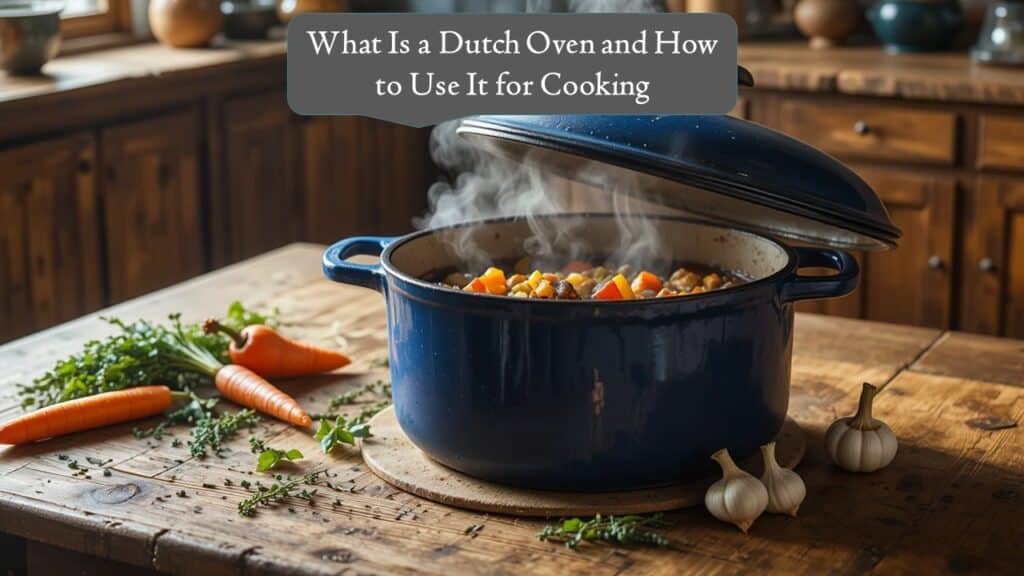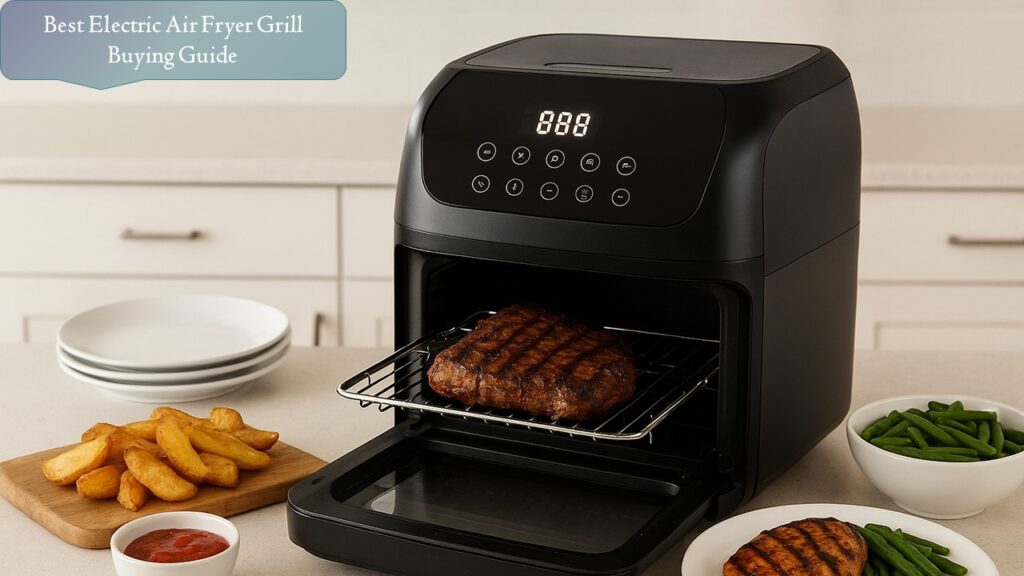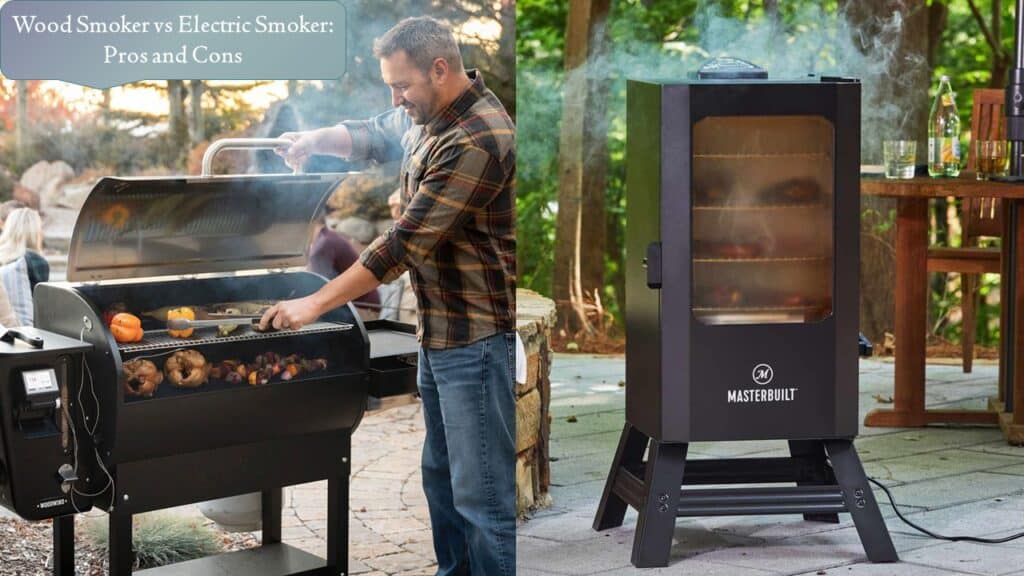When it comes to versatile cookware that can do it all—from baking bread to simmering stews—a Dutch oven is every home cook’s secret weapon. Known for its durability, heat retention, and ability to go from stovetop to oven, this classic pot has been a kitchen essential for centuries.
If you’ve ever wondered what exactly a Dutch oven is, how to use it, or why so many chefs swear by it, this guide will tell you everything you need to know.
What Is a Dutch Oven?
A Dutch oven is a heavy-duty pot, usually made of cast iron, designed for slow cooking, roasting, frying, and baking. It features thick walls and a tight-fitting lid, which help trap heat and moisture, ensuring your food cooks evenly and stays tender.
Modern Dutch ovens often come with an enamel coating, which makes them easier to clean and prevents rusting, while traditional cast-iron versions require regular seasoning.
- Pre-seasoned cast iron dutch oven with side handles
- Even Heat Distribution Retention: This Dutch oven Made with heavy-duty enameled cast iron, ensures even heat...
Common Materials:
- Cast Iron (Bare):
The traditional version that requires seasoning but offers superior heat retention. - Enameled Cast Iron:
Features a smooth, non-reactive enamel coating, perfect for everyday cooking and easier cleaning.
Typical Sizes:
Dutch ovens come in various sizes, ranging from 2 quarts (for sides) to 7+ quarts (for family meals).
Why Is It Called a “Dutch” Oven?
The term dates back to the 17th century, when Dutch craftsmen were famous for their advanced metal-casting techniques. The English adopted and refined this method, and the resulting cookware became known as the “Dutch oven.”
Over time, it became a staple in kitchens around the world—used by pioneers, campers, and chefs alike.
- YOUR GO-TO DUTCH OVEN: This Lodge 6 Quart Enameled Cast Iron Dutch Oven combines durability and elegance, perfect for...
- ORIGINAL KITCHEN MULTITASKER – The DuraCast 6Qt Enameled Cast Iron Dutch Oven is the ultimate cookware piece to...
How Does a Dutch Oven Work?
The secret to a Dutch oven’s performance lies in its heat retention and distribution. The thick cast iron absorbs heat slowly and evenly, while the tight lid keeps moisture inside, creating a natural self-basting environment.
This means your food won’t dry out, and flavors deepen as the dish simmers slowly—perfect for braises, stews, soups, and roasts.
- Suitable for 7-8 people: The 7 quart enamel Dutch oven is the choice for cooking food and desserts. Its design makes...
- HexClad’s Hybrid technology features a laser-etched hexagonal nonstick surface that combines both stainless-steel and...
- Enameled cast iron delivers superior heat distribution and retention
Common Uses for a Dutch Oven
A Dutch oven is one of the most versatile tools in your kitchen. Here are some of its most popular uses:
-
Slow Cooking and Braising
Perfect for tenderizing tough cuts of meat. Simply sear your meat on the stovetop, add liquid and vegetables, cover, and let it slowly cook in the oven.
Examples: Pot roast, beef stew, or braised short ribs.
-
Soups and Stews
The deep design and even heating make Dutch ovens ideal for simmering soups and hearty stews. The heavy lid traps steam, locking in flavor.
Examples: Chicken noodle soup, chili, minestrone, or gumbo.
-
Baking Bread
Yes, you can bake artisan-style bread in a Dutch oven! The heavy lid traps steam during baking, giving the bread a crispy crust and fluffy interior.
Tip: Preheat your Dutch oven before placing the dough inside for best results.
-
Deep Frying
The cast iron maintains a steady oil temperature, which is key for perfect frying.
Examples: Fried chicken, doughnuts, or French fries.
-
Roasting and Baking
Dutch ovens can handle high oven temperatures, making them great for roasting meats, vegetables, or even making casseroles and cobblers.
-
Camping and Outdoor Cooking
Bare cast-iron Dutch ovens can be used directly over campfires or charcoal, making them popular for outdoor cooking. Some models even have legs and flanged lids to hold hot coals for even heating.
How to Use a Dutch Oven: Step-by-Step?
Using a Dutch oven is simple, but a few best practices can help you get the most out of it.
Step 1: Preheat Gradually
Cast iron heats slowly but retains heat well. Always warm it over low to medium heat to avoid thermal shock, especially if it’s enameled.
Step 2: Brown Ingredients First
For dishes like stews or roasts, start by searing meat or vegetables to build flavor.
Step 3: Add Liquids and Seasonings
Add broth, wine, or water along with your seasonings, then cover with the lid to trap moisture and flavor.
Step 4: Cook Slowly
Place the Dutch oven in your oven or let it simmer on the stove. The low, even heat will do the rest.
Step 5: Clean and Store Properly
Allow it to cool completely before washing. For enameled versions, use mild soap and soft sponges. For bare cast iron, rinse and dry immediately, then rub with a thin layer of oil to prevent rusting.
Tips for Caring for Your Dutch Oven
To keep your Dutch oven in top condition:
- Avoid sudden temperature changes (e.g., adding cold water to a hot pot).
- Use wooden or silicone utensils to prevent scratching the enamel.
- Store with the lid slightly open to prevent moisture buildup.
- Re-season bare cast iron periodically to maintain a non-stick surface.
Advantages of Cooking with a Dutch Oven
| Pros | Details |
| Versatile | Can be used for baking, frying, roasting, stewing, and boiling. |
| Excellent heat retention | Maintains consistent temperature for even cooking. |
| Durable | Can last for decades with proper care. |
| Oven and stovetop safe | Works on gas, electric, induction, and open flame. |
| Flavor enhancement | Moisture retention leads to richer, more concentrated flavors. |
Disadvantages of a Dutch Oven
| Cons | Details |
| Heavy | Cast iron models can weigh up to 15 pounds or more. |
| Requires maintenance | Bare cast iron must be seasoned regularly. |
| Expensive | Premium brands like Le Creuset or Staub can be costly. |
| Not for quick cooking | Best suited for slow, steady cooking. |
Popular Brands of Dutch Ovens
If you’re considering buying one, here are some trusted brands to look for:
- Le Creuset: Premium enameled Dutch ovens with vibrant colors and exceptional quality.
- Staub: French-made, heavy-duty enamel with excellent heat retention.
- Lodge: Affordable, reliable, and available in both bare and enameled cast iron.
- Cuisinart & Tramontina: Great mid-range alternatives.
Conclusion:
A Dutch oven is more than just a pot—it’s a versatile cooking powerhouse that can handle nearly any dish. Whether you’re simmering a stew, baking crusty bread, or roasting a whole chicken, this classic piece of cookware delivers rich flavor and perfect results every time.
With the right care, a Dutch oven can last for generations, making it one of the most worthwhile investments in any kitchen.
So if you’re looking to elevate your home cooking, it might be time to dust off (or buy) your very own Dutch oven and start experimenting!














